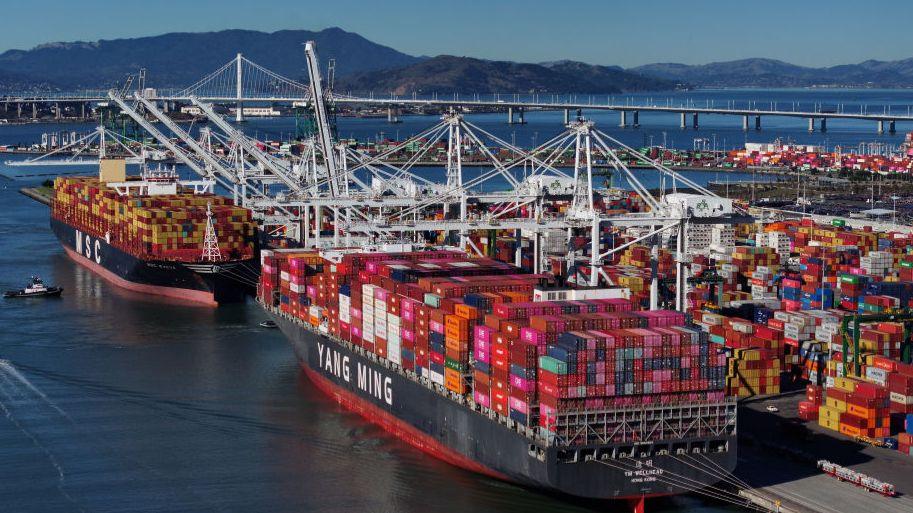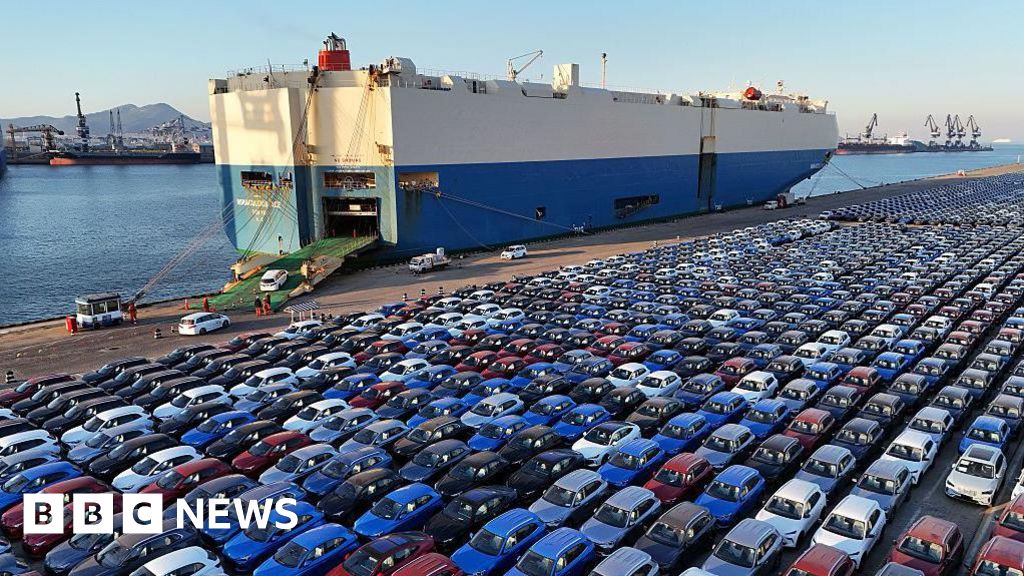“In a startling display of international unity, world leaders from top economies have collectively condemned US President Donald Trump’s recent tariffs, labeling them ‘wrong’ and ‘unjustified’. In a move that has sent shockwaves throughout the global economic landscape, the likes of the European Union, Canada, and Japan have joined forces to express their deep concern over the imposition of these protectionist measures. The tariffs, which have sparked a heated trade war with key allies, have sparked heated debates among policymakers and economists, with many warning of severe economic repercussions for the world at large. As the standoff between the US and its traditional trading partners escalates, Unionjournalism delves into the reaction of the world’s top leaders, exploring the implications of these strident tariffs on global trade and the fragile balance of power in the increasingly complex world of international commerce.”
Analysis: Winners and Losers in the Tariff Game

The Trump administration’s tariffs have sent shockwaves across the global economy, with world leaders calling them “wrong” and “unjustified”. But who stands to gain and who will lose in this tariff game?

Understanding the Trump Administration’s Tariff Strategy
The Trump administration’s tariff strategy is centered around the idea of “reciprocal measures” and “making America rich again”. The White House claims that these tariffs are necessary to counter unfair trade practices by other countries, including China, which it accuses of charging higher tariffs on US goods and imposing non-tariff barriers to US trade.

The Rationale Behind Trump’s Tariffs: Reciprocal Measures and “Making America Rich Again”
According to the Trump administration, the tariffs are intended to level the playing field and make trade fairer for American businesses. The administration claims that other countries have been taking advantage of the US for too long, and that it’s time for the US to fight back.

The Role of the White House in Shaping Tariff Policy: A Look at the Decision-Making Process
The decision-making process behind the tariffs is shrouded in secrecy, with the White House keeping tight-lipped about the details. However, it’s clear that Trump himself has been the driving force behind the tariffs, with his advisors and officials scrambling to keep up with his demands.

Implications for US Trade Partners and the Global Economy
The implications of the tariffs are far-reaching, with countries around the world scrambling to respond. The EU, China, Canada, and Mexico are just a few of the countries that have been hit hard by the tariffs, with many more likely to follow.
Practical Consequences and Next Steps
The practical consequences of the tariffs are already being felt, with businesses and consumers alike feeling the pinch. So what’s next?
How Tariffs Will Affect Businesses and Consumers: Who Will Pay the Price?
The tariffs will undoubtedly lead to higher prices for consumers, with businesses passing on the costs of the tariffs to their customers. However, the exact impact will depend on a range of factors, including the size and scope of the tariffs, and the response of other countries.
Negotiation and Retaliation: How Countries Are Responding to Trump’s Tariffs
Countries around the world are responding to the tariffs in different ways, with some imposing their own tariffs on US goods, while others are seeking to negotiate a deal with the US. The EU, for example, has imposed tariffs on US goods such as bourbon and jeans, while China has retaliated with tariffs on US soybeans and other agricultural products.
What’s Next? Possible Scenarios and Outcomes in the Trade War
The outcome of the trade war is far from certain, with many possible scenarios playing out. One possibility is that the tariffs will lead to a full-blown trade war, with countries around the world imposing tariffs on each other’s goods. Another possibility is that the tariffs will lead to a negotiated settlement, with countries agreeing to reduce or eliminate tariffs in exchange for other concessions.
Conclusion
In conclusion, the chorus of disapproval from world leaders against Trump’s tariffs serves as a stark reminder of the isolationist approach the US administration has taken on global trade. The tariffs, deemed “wrong” and “unjustified” by numerous nations, have sparked widespread concerns about the future of international cooperation and the stability of the global economy. The main arguments presented in this article highlight the retaliatory measures taken by countries such as China, Canada, and the EU, as well as the warnings from prominent figures like Angela Merkel and Justin Trudeau, who have emphasized the need for diplomacy and cooperation in resolving trade disputes.
The significance of this issue cannot be overstated, as the tariffs have far-reaching implications for industries, workers, and consumers worldwide. The rise of protectionism and trade tensions poses a significant threat to the rules-based international trading system, which has underpinned global economic growth and stability for decades. Moreover, the tariffs have also sparked fears of a global trade war, which could have devastating consequences for the world economy. As the situation continues to unfold, it is essential for nations to engage in constructive dialogue and work towards finding a resolution that promotes fair trade and benefits all parties involved.

